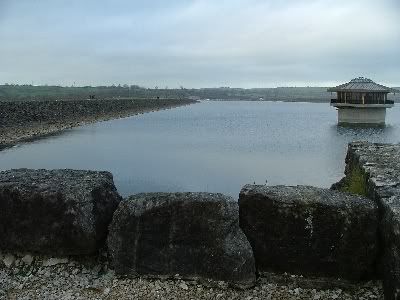
After reading in the bible of British birding,
Birds Britannica (by Mark Cocker, Richard Mabey), that the stuffed remains of the nation's first ever Egyptian Nightjar were still on display in our local museum 120 years after it was shot, a short pilgrimage felt necessary.
Okay so it's no great feat in taxidermy, but there is an interesting story attached, here's an excerpt from the book;
A Nottinghamshire gamekeeper, Albert Spinks, flushed a bird from its resting spot while he was shooting rabbits and, thinking it looked unusual, brought it down with his second barrel. A day later when it started to smell he threw it on to the ashpit near his cottage, only for his ornithologist employer, J. Whitaker, to notice and retrieve the skin. Whitaker sent it to his taxidermist and subsequently had its identity confirmed as an Egyptian Nightjar, then he honoured 'his' find by erecting a monument at the site of discovery (Thieves Wood, near Mansfield). The inscription, in which the largest letters spell his own name, was intended to read: 'This stone was placed here by J. Whitaker, of Rainworth Lodge, to mark the spot where the first British specimen of the Egyptian Nightjar was shot by A. Spinks, on June 23rd, 1883, this is only the second occurrence of this bird in Europe'. In fact 'occurrence' was misspelt and the date appears to have been wrongly given as 1882.Apparently this was almost unique for being memorial for an individual wild bird in Britain, and probably the only one since the last British breeding pairs of Great Auk were killed in the Orkneys during the early 19thC. Alas it has since been removed from the site, replaced by a simple post etched with the momentus date and a figure of the bird.
So far there has only been one other record of the Egyptian Nightjar in Britain so it seems very likely this will be the closest of come to ticking off the species, short of a trip to Africa.
Reading back through the history of the way our ancestors interacted with the wild bird populations they found can often be deeply saddening exercise, where you'll learn about centuries of exploitation, superstition and casual disregard, so it's truly heartening to think we live in more enlightened times, with a renowned organisation like the RSPB, with its million strong membership passionate about conserving
and enjoying our natural avian heritage.

 The GND has been there most of the week so word had gotten around and we happily guided four or five other birders to the rarity. You know you have a special bird when people don't even have to tell you what species they're looking for, a simple 'is it about?' is enough.
The GND has been there most of the week so word had gotten around and we happily guided four or five other birders to the rarity. You know you have a special bird when people don't even have to tell you what species they're looking for, a simple 'is it about?' is enough.









